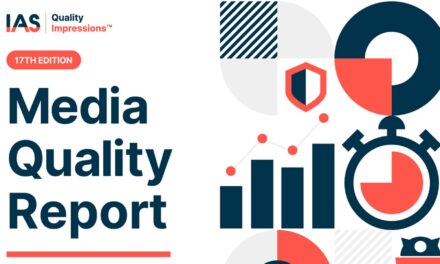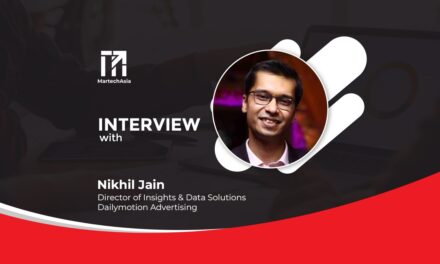With emerging technologies and shifting consumer demands, it is vital for businesses to utilize data assets to be able to develop digital strategies that will help propel business growth, says Geoff Soon, Managing Director, South Asia at Snowflake, in this interview with MartechAsia.
What are some recent adtech trends in the media and entertainment industry in Asia?
Adtech or Advertising Technology is going through profound shifts as digital media consumption accelerates. With evolving viewers and consumers’ preferences, data and AI will play a central role in shaping the adtech industry in 2022 and in the years to come.
According to PWC‘s recent Global Entertainment & Media Outlook report, while the health crisis is considered as a major driver in the migration of consumers to digital platforms, several shifts are already at play even before the pandemic. With the rise in smart device adoption, faster connectivity speeds, and the growth in the number of platforms offering digital content, people are spending more time at home and consuming more content online.
Across Southeast Asia, consumers are moving towards new media consumption models as streaming platforms continue to gain traction. Insights from a recent research analyst report show online video views for Q3 2021 has reached 1.25 trillion minutes across measured platforms, including advertising-based video on demand (AVOD), subscription video on demand (SVOD), freemium and game streaming. Moreover, premium video streaming further increased, capturing 10 percent of total video consumption.
In the over-the-top (OTT) space, competition is at an all-time high. Major industry players such as Amazon, Discovery, Disney and Netflix vying for market share, are using artificial intelligence (AI) and machine learning (ML) in predicting viewing patterns and preferences to offer relevant content based on users’ activities and choices. Using algorithms, content platforms collect and analyze data to provide consumers with personalized content to keep them constantly engaged. Moreover, data analytics services augmented with AI enable entertainment businesses to get unique insights across multiple channels in real time and deliver excellent experiences.
The use of Virtual Reality (VR) is also expected to accelerate as companies introduce enhancements to improve the technology to augment user experience in virtual environments.
Lastly, privacy is gaining attention. With the increasing number of data breaches and cybersecurity issues, consumers are gravitating toward brands that have defined and clear policies for protecting their information. Moreover, governments across the Southeast Asian region are implementing data protection policies to protect consumers. Hence, brands, marketers, agencies and platforms – all will have to work together, to ensure that the ecosystem is privacy-compliant. Gaining insights into audience preferences while complying with consumer privacy regulations is just one of the challenges companies must overcome to provide secure, engaging and personalized user experiences.

South Asia at Snowflake
How can media companies innovate and deliver better customer experiences through the vast amount of data they collect through data sharing and collaboration?
With the availability of data from a host of content delivery platforms, including mobile devices, computers and HD boxes, the entertainment industry is awash with tools to be predictive and more accurate in making decisions.
The amount of data the media and entertainment industry generate – from viewership records to social media sentiments, demographics to device data – combined with the accelerated adoption of digital technologies such as cloud, artificial intelligence and machine learning, presents vast opportunities for media and entertainment firms to understand what content, shows, movies and music consumers want. To harness the opportunities with the growth in content consumption, build up a comprehensive 360° view of their customers and open new revenue streams, industry players must solve their data challenges and empower their organizations to become truly data driven.
Using data clean rooms enables multiple companies or divisions within the same company to securely share and analyze data under defined restrictions at a massive scale and performance. With defined guidelines and policies that keep the data secure, organizations within the industry can bring data together for analysis and discovery. Data discovery ensures that data can be found and easily understood, queries can be evaluated, and a determination can be made as to whether, how, and when to provide query results, to ensure data remains anonymized and secure.
How can organizations use marketing intelligence to personalize and promote their content to the right audience?
Not too long ago, media and entertainment companies relied on audience surveys, ratings, and blockbuster charts to arrive at business and investment decisions. Insights into viewers’ wants and preferences were limited, and many projects were often hit-or-miss affairs. As the demand for hyper-personalized content and immersive entertainment continues to increase, companies within the media and entertainment sector must leverage technologies and processes that will help them extract valuable insights from data, whether internal or external.
With data on consumers’ consumption patterns and habits, companies can enhance content development and acquisition and make better decisions on which projects to fund or which channels to launch their content. Media organizations can also tap on the capabilities to share and match first-party data in a secure, privacy-compliant manner, generate richer audience insights, and run targeted campaigns that drive real, demonstrable business value. With this data sharing environment, organizations can share and access first-party data without exposing personally identifiable information (PII).
By tapping on data from publishers and technology companies, organizations can analyze every click, hover, or stream across devices to create a comprehensive view of subscribers, understand drivers of subscriber acquisition and retention, and increase average revenue per user (ARPU) without data ever leaving their environment.
For example, Snowflake has partnered with Disney Advertising Sales, which is responsible for integrated marketing for The Walt Disney Company’s entertainment and sports offerings through linear, digital, social, audio and ad-supported streaming businesses. The collaboration with Snowflake has enabled Disney Advertising Sales to gain access to customers’ data for customization of offerings in a secured data environment. This enables the marketing team to optimize their efforts and target customers more efficiently, saving time and cost.
How can organisations tap on their existing data to support business solutions for audience insights, media planning, activation and measurement?
With emerging technologies and shifting consumer demands, it is vital for businesses to utilize data assets to be able to develop digital strategies that will help propel business growth. Here are some of the focus areas, which illustrate how data can be utilized in the media and entertainment vertical:
- New product development based on forecasts distilled from audience interests: Viewing history, searches, reviews, ratings, location and device data, clickstreams, log files and social media sentiment are just a few data sources that help organizations identify audience interest.
- Monetize content: Data can also help media and entertainment companies generate additional sources of revenue, suggest new ways to incentivize consumer behavior, and identify new products or service opportunities.
- Optimize advertisement targeting using customer micro-segmentation: Since consumers access media and entertainment on multiple devices simultaneously, big data insights can help better understand when consumers use a different device to consume the same content.
To deliver personalized content and experience, companies should first create a single source of truth by storing, integrating, and querying all their data in a single location. By breaking data silos and leveraging data at scale, companies can aggregate data from various sources, gain market insights and create a holistic view of their customers.


















